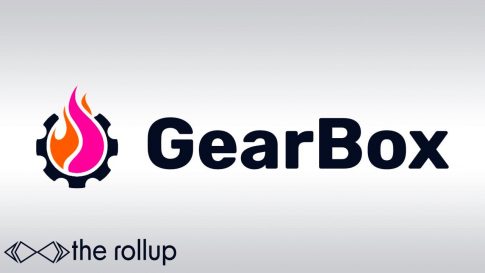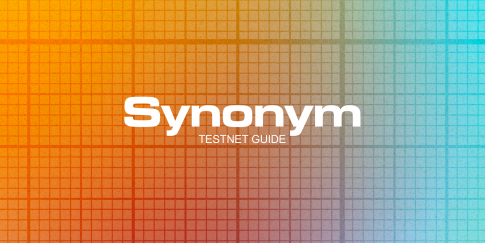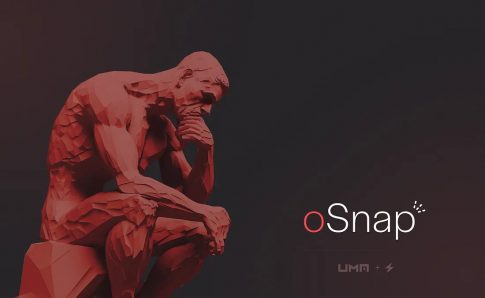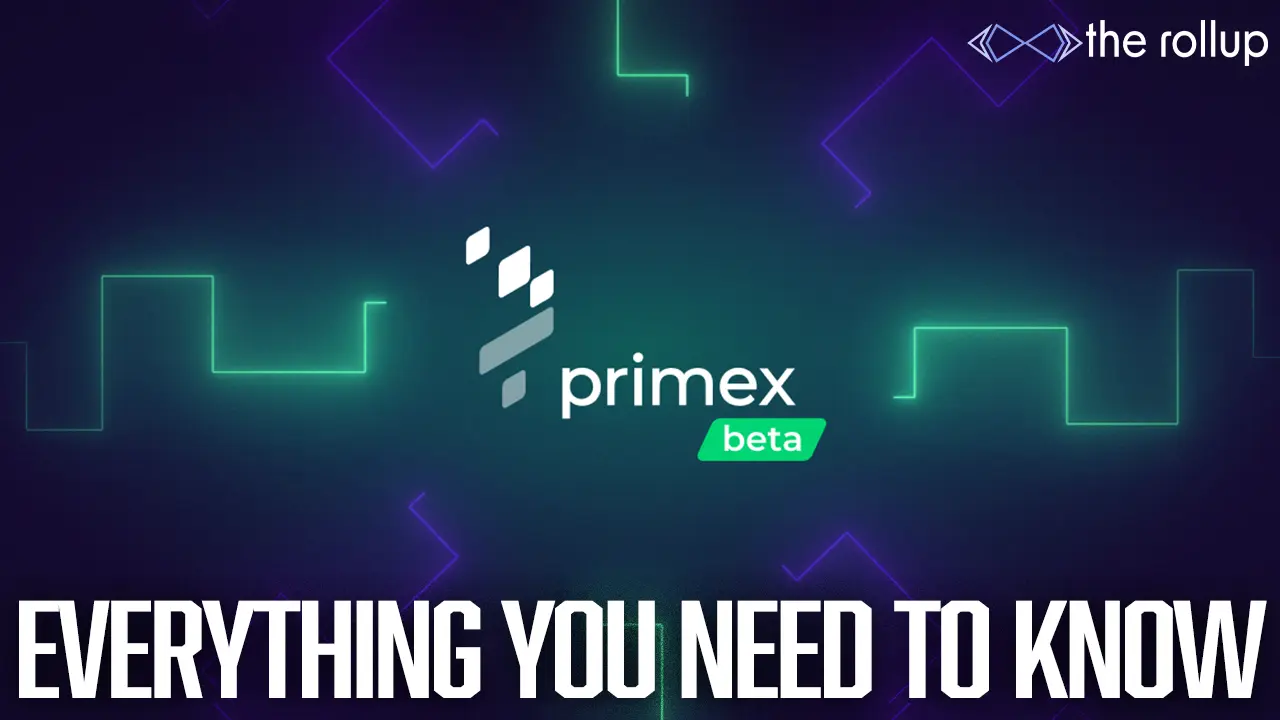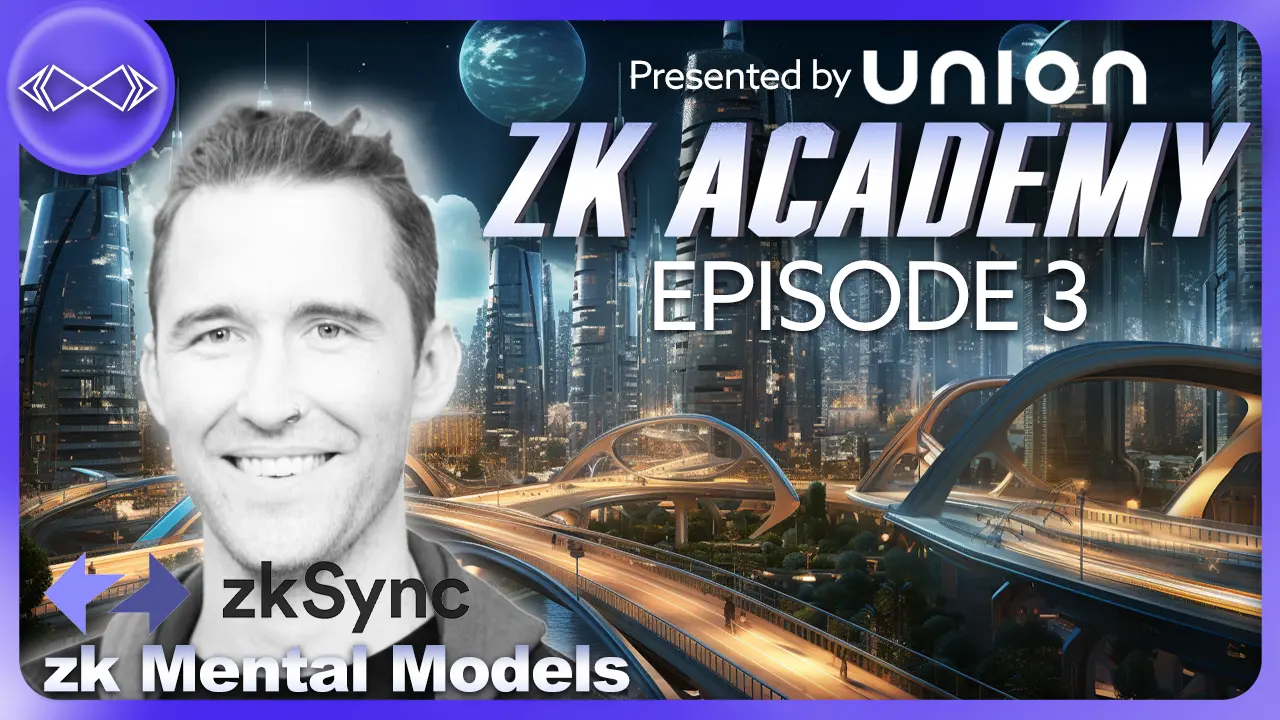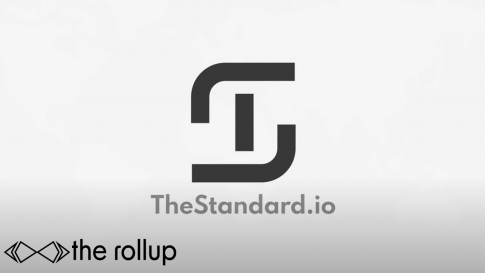Learn How Easy It Is To easy to Build Permissionless Derivatives and Markets
 Trade BTC, ETH, AVAX and other top cryptocurrencies with up to 30x leverage directly from your wallet (& save on fees using our link HERE)
Trade BTC, ETH, AVAX and other top cryptocurrencies with up to 30x leverage directly from your wallet (& save on fees using our link HERE)

DeFi Slate Fam:
Do not let a bear market rally ruin things for you–build season is still in full effect. Recent swings in the market are getting increasingly disparate as a result of conflicting macro and crypto sentiment. Confidence in the ETH merge has subsided since OFAC added a smart contract to their specifically designated entities. There is a lot of confusion in the air on if Ethereum will successfully merge the PoS Beacon chain with the existing PoW chain and how PoS block validation will impact transactions on the network. The merge FUD seems to suppress the price of ETH during an otherwise bullish market sentiment. An ETH reprice depends on a successful implementation of the Merge and community confidence in effectively handling compliance at the protocol level.
In this piece we sit down with the Vega protocol. It’s not only a scaling layer, but also a set of primitives that makes it easy to build permissionless derivatives and markets. Vega delivers a platform for smarter design of financial products to empower the architects of DeFi.
Enjoy!
Best,
Rob
Join Our High-Level DeFi Community Today!
Fundraising, Technical Papers, Events & Even More: ZKX AMA
Andy: Are you having fun in Paris?
Barney Mannerings: Yeah, really enjoying it so fairly hectic event. Like I don’t even have a ticket to the main event. I’ve just been to side events. We’ve been running events, so we’ve been all over, but it’s been really good fun.
Rob: Why the name Serotonin?
Barney Mannerings: We’re with Vega, Serotonin is the media company for the event.
Rob: Vega is more like an option, is a Greek, right?
Barney Mannerings: Yes, Vega is Greek.That’s where the name comes from for Vega. It’s a protocol for derivatives of all sorts. It’s kind of like a scaling layer, but also a set of primitives that makes it easy to build permissionless derivatives markets.
Barney Mannerings: Is it similar to permissionless derivatives like Opyn? I guess the question is what’s the differentiator?
Barney Mannerings: I guess big differentiator is, firstly, we’re kind of product agnostic, so a lot of things like opyn for instance they focus on options, so they’re building an options protocol, which is very very tight and like tightly coupled to options, whereas what we’re building is kind of the infrastructure to enable all kinds of things. So, we’re effectively building our own chain, which is kind of like an app chain or a side chain L1/L2. I don’t know what we want to call it, but it’s a fruitful state network that contains things like a settlement layer, price determination for on-chain order books so they could have hybrid liquidity and an order book. It contains risk management and more, so effectively you have all of this sort of infrastructure there and then as a developer you can focus on building a product and deploying a specific market.
So you’re really just focusing on how to value a certain product or how to manage and build a risk model for that product and all of the sort of infrastructure. That’s sort of based on if you actually look at how investment banks and other sort of tradFi organizations do it. They built a lot of infrastructure. Quant libraries and all of this sort of trading infrastructure to support the products, and they can roll out products really quickly. This is kind of the same idea but completely open, permissionless network so the users are in charge of what they build, what markets they create, how they supply liquidity in it.
Rob: Do you see traditional derivatives markets ultimately converging with on-chain derivatives?
Barney Mannerings: Yeah, the long term vision would be that. It sort of reminds me of the Internet like there’s still a role for major publications and big big organizations that publish content on the Internet, but there’s also kind of a long tale of microblogging personal stuff, things like substack. I sort of think the same model will apply in finance, where you get a lot more innovation and much more rapid development.
If anyone is able to create a market in their bedroom, anyone can deploy liquidity, then as things scale up, you’re going to find things more like the traditional construction, traditional players being a bigger part of the larger market, so I sort of see it as a bit like how the Internet has completely revolutionized publishing and information. How you kind of deal with that long tail, have faster innovation and also sort of forced the traditional markets to be more open and provide more access.
Andy: Permissionless nature is like a double edged sword. It’s got some crazy things happening like new tokens being created and novel markets. What are some of the most interesting markets that you guys have seen? Whether good or crazy?
Barney Mannerings: So our trading actually launched in September, so we haven’t seen anything on mainnet yet, but we have seen a lot of really interesting proposals and you know, it kind of goes from the really reactionary proposals here.
During COVID you create a market on the number of cases in a different place, for example. It is very use-case specific things that people looking at the cost of running certain contracts or something would use. And actually, you know you could have a market on the cost of making a trade on uniswap so that you could hedge your cost of trading on uniswap, right?
So you get all these kind of really niche ideas and then you get people sort of proposed the really wacky out there ones that are controversial and relate to kind of like what happens if you have a market on whether someone remains the president of the country and so now you can create a financial incentive to kind of get rid of that president. Like is that good or bad? One of the things we’ve done is although we kind of have the permissionless open network, we also give the token holders who run it, a role in curating what people can actually trade. So rather than say sort of uniswap style, anyone can create a fraudulent market and spam that link into telegram. And now people think they’re buying Bitcoin, but they’re actually buying my token I made-up yesterday, you can sort of have the community have a role in curating and removing fraud and outright scammy stuff. So I think, as you say, it’s a double edged sword, and I think there is a role if you make it hard to deal with the bad stuff and the bad stuff will be more prevalent. And if you make it permissionless, but also give permissionless tools to manage the bad stuff. Then you’re more likely to get good outcomes.
Andy: How do you think the protocol kind of contributes to the core vision of DeFi? Like how does Vega make the world a better place?
Barney Mannerings: There’s an opinion which I suspect most people in this space share, which is kind of that people should have a right to transact. You know, kind of, like if you want to give people a right to freedom of speech and freedom of expression and freedom of association, then if you can cut off their access to money and to transaction with each other and to doing deals, then it’s difficult to say they have those freedoms because how do you? How do you put information out there? How do you get somewhere to meet people you want to hang out with? Like you don’t have those freedoms if you have no access to finance.
So I think that baseline assumption if you believe that that’s true, which I think we mostly do. Then you know, I looked at it like we have Bitcoin and we have Ethereum. We have those first sort of base layer crypto native tokens. We then have sort of tokenization itself which allows us to create any asset and then what you think is start to think is well if this is going to become an alternative financial system that gives us those freedoms and allows everyone this permission to access, then in order for it to compete in order for it to really do that, it also has to have a lot of the other features that are needed to make a finance system work to have trading and it also ought to have financial products like derivatives and insurance, because those things actually make the other bits work better. Like if you can manage risk through derivatives. If you can manage through insurance. If you can have investment products then you can have a functioning financial system. If you’re stuck at tokenization then you’re going to end up sort of dropping back out to a centralized system that someone else controls in order to have a fully functioning system.
So you kind of, you get in the way of providing that freedom because you put the control back in at a different layer. So we kind of believe that you need to have all those layers that need to be decentralized and permissionless, otherwise you really can’t achieve that overall vision. And so with Vega, we kind of looked at what was going on in decentralized finance.
We sort of saw that people were just about building functional and useful decentralized spot exchanges and that those were actually getting to a point where they could be used for real finance, but that when you compared what people were doing on Ethereum with derivatives in the real world, there was very little that you could say, yeah, this is a real alternative. You know, we were looking at things like synthetics where it was multiple times over-collateralization, whereas a centralized platform would give you 10X leverage. And those differences are the difference between useful and not useful for a lot of use cases. So we really set out to say, how do we make decentralized derivatives as part of that required ecosystem? How do we make that useful so that we could say we don’t need to allow centralized statements like that. At some point if every centralized exchange got shut down by regulators or whatever, this system would continue and it would still have access to derivatives that were useful. So that’s kind of the contribution we’re trying to make and one of the important parts of that is building a system that’s good enough to do that usefully. But the other one is making sure that system is sufficiently plugged into the rest of the ecosystem that it contributes to the part of the whole and makes for some greater, you know, the whole greater than the sum of its parts rather than the other way around. We’re not trying to build a walled garden or a closed off system where everyone has to be on Vega, in order to get the benefits, we’re kind of saying, “hey, you can transfer your ERC 20s over the bridge to Vega. You can trade them, you can have access to these good derivatives markets and spot markets and you can send them back to another protocol and you can develop things on Vega, you can develop things elsewhere.” We want to be part of that conversation and part of that sort of wider ecosystem.
Rob: I think that point is missed sometimes when people talk about an alternative financial system, it’s still composable with the rest of the financial system. So it creates a new element of transparency. Increasing the capital efficiency once the traditional products are incorporated into the on-chain ecosystem is a major key, otherwise it’s a dislocated market because the demand is there in the traditional markets.
Barney Mannerings: Yeah, exactly. And I look at it like, you know, let’s say that these guys import something from South America and they have a currency risk there. If they cannot look at what we’re building in our alternative system as an alternative to hedging their currency risk, if their only option is still to go to their bank and say, can I hedge this currency risk…?
And all we’ve done is built a thing which you really have to really want to be in crypto and like live your life in crypto and be sort of core crypto nerd for it to be useful for me and for everyone else that are still going to their bank, so you haven’t really built an alternative financial system, you built an alternative lifestyle!
Which is cool and there’s some really fun stuff going on in that area. But I think for us it’s very much about providing alternatives to people like that who want to do that hedging and want to access these products, making sure the Commission is making sure it’s available to people even if they’re unbanked or underbanked or wherever they are in the world. And so for us making it sort of real world useful overtime you know obviously the starting point will still be we won’t do it alone right. You know you’ve got wallets, you’ve got interconnections to the financial system, you got all these different areas, regulation that needs to be sufficiently cleared for people to feel comfortable using these products. Like all of these things have to come together but I think we see it as being part of the building that’s necessary to get there.
Andy: Are you guys on Ethereum now?
Barney Mannerings: Yes. Our main bridge is to Ethereum, so our network is a proof of stake network that uses Tendermint, which is the same consensus layer as Cosmos. The bridge we have right now is to Ethereum. So when trading launches in September, that means that you’ll be able to send the ERC20 assets from Ethereum to our bridge. Obviously you’re going to pay gas on Ethereum to do that, to deposit the assets, but then once they hit the Vega bridge and deposit in your Vega wallet, then your trading doesn’t incur gas fees because the entire network and protocol work more like sort of traditional exchange fees, where your fee as a percent of the trade size. So whereas you find you’re buying $500 worth of a coin on uniswap and you pay $600 in fees, that’s literally impossible on Vega.
Andy: Do you guys have an active testnet right now?
Barney Mannerings: Yes, we actually had an incentivized testnet that we run where we actually pay the community with Vega tokens to test various aspects of the networks. We’re effectively creating simulations, we run a bunch of it and then we sort of incentivize the community to trade as traders or provide liquidity or to try and break the system or whatever it is. That’s been ongoing for like over a year now.
We also have a test net run by the validators who also run the main net and we have a main net live and so we actually split our launch into launching the network at launching the token which we did last year, sort of middle of the year summertime. Then towards the end of last year we launched the network as a governance and staking network to effectively get the validators running, prove that it’s secure proof that we can upgrade the network over time, enable staking so token holders can already stake their tokens that runs the network and proves that the network is ready to actually run the application. But behind the governance vote right now the trading is disable although the code is there, we as a project team are kind of saying “hey, these are the things that we think should be worked on and delivered and changed before people should risk money on the network” So that’s ongoing.
We’re looking at a September launch where effectively we will put a governance proposal out to say, “hey, we think trading should be enabled on this date” and then the Community will vote and that’s assuming the community validates and everyone agree with us, people will be able to actually start trading on the network in September.
Rob: What does the set of validators look like?
Barney Mannerings: So we have 13 validators. There is a combination of validators who are early investors in Vega who also run nodes. We have community validators who are for people from our community who run validators and we have some sort of professional staking and validated firms. The 13 of them were selected by a governance vote last summer. So we effectively ran an open process. There were about 50-55 applications on our forums which from all these different validators we reviewed, we sort of worked with the community to make a proposal and then put that through a governance vote and then they started.
Rob: Do you see a lot of activity in governance?
Barney Mannerings: Not at the moment and that’s probably just because the trading isn’t live. So most of the governance would really come down to decisions about trading, about what the fees should be, about how risk is managed. So at the moment we don’t see a huge amount of government activity. We do see over 50% of our tokens staked, which is Nice. So you can see good, good engagement with the staking. When we have run governance votes we’ve seen good engagement. We are currently working to build out the governance through our website and explaining the process and we’re working with some of the validators and early community members on some governance votes that they actually want to put through soon. So we’re going to see lots more happening in governance as we come closer to the launch of trading and then I think we’ll see good activity.
Andy: Awesome. I guess the last thing is kind of what’s so you’ve touched on it, but what’s, what’s the next six months look like?
Barney Mannerings: Yeah. So obviously the big thing is getting through making the changes and most of the changes we’re making right now, the protocol around robust to make sure that for instance during an upgrade process you don’t have a situation where five validators are offline at the same time and the networks at risk.
So we’re making sure that the system is robust from that perspective QA within running on our intensified running a series of mainnet simulations that is basically incentivizing professional liquidity providers to create realistic markets and provide liquidity on testnet and incentivizing the community to trade realistically. So it’s sort of a more realistic version of the sort of incentivized testnet running a sort of these simulations, first on the network we run and then on the network the validators run to simulate the remaining net situation as far as possible. That will sort of culminate eventually in those finishing and then trading being enabled by that governance vote. Obviously then you know the whole process is around us: writing, iterating the product, getting feedback, understanding how people use the network and how people use the protocol and what they need from the next versions, particularly around UI and UX as well.
And then after that we’re really into it, we’ve got some exciting upgrades that we want to put onto the network. So enabling any Ethereum smart contracts to be used as an Oracle for Vegas. So that effectively, rather than having to build a Vegas specific Oracle, anything in the Ethereum ecosystem can be composed into Vegas and Oracle for a market, AMS and passive liquidity. We’re gonna launch hybrid liquidity where effectively you have both an order book and an AMM curve.
So if you are a sophisticated trading firm, you can take advantage of full limit orders rather than a uniswap three thing like a proper order book. But if you’re less sophisticated than just want to deploy capital, you will have a sort of passive AMM curve style option to do that as well. So that will enable more community members to launch markets and to do cool stuff because they won’t need to have so much trading experience. And then after that, you know, we’re just looking at things like improving performance, adding features. Initially we’re just cash settled futures, but later this year we’ll be adding the ability to completely code up your own products. We’re looking at things like perps and spot markets as well. So really just from there it’s kind of iterate on community feedback and then provide more tools to do more with Vega and then more integration so you know, IBC and Cosmos and other chains and other types of assets that people might want to trade. That’s the plan!
???? Together with:
Composable leverage protocol. Open a Credit Account & get 15%+ with DeFi-native leverage; or earn passive lending APY with no stress ???? Here
It’s officially time to start testing the first version of Synonym. Break things, provide feedback, and of course, get rewarded.???????? Here
Off-chain governance. On-chain execution. Optimistically execute governance transactions on-chain where your community can approve them. Check it out Here!
The Rollup Report ????????????
⚠️ DISCLAIMER: Investing in cryptocurrency and DeFi platforms comes with inherent risks including technical risk, human error, platform failure and more. At certain points throughout this post, we might get a commission for promoting certain projects, if this is the case we will always make sure it is clear. We are strictly an educational content platform, nothing we offer is financial advice. We are not professionals or licensed advisors.
???? Check Us Out On Twitter!
???? Subscribe to our YouTube channel!
???????? Join the The Rollup Discord Server!

